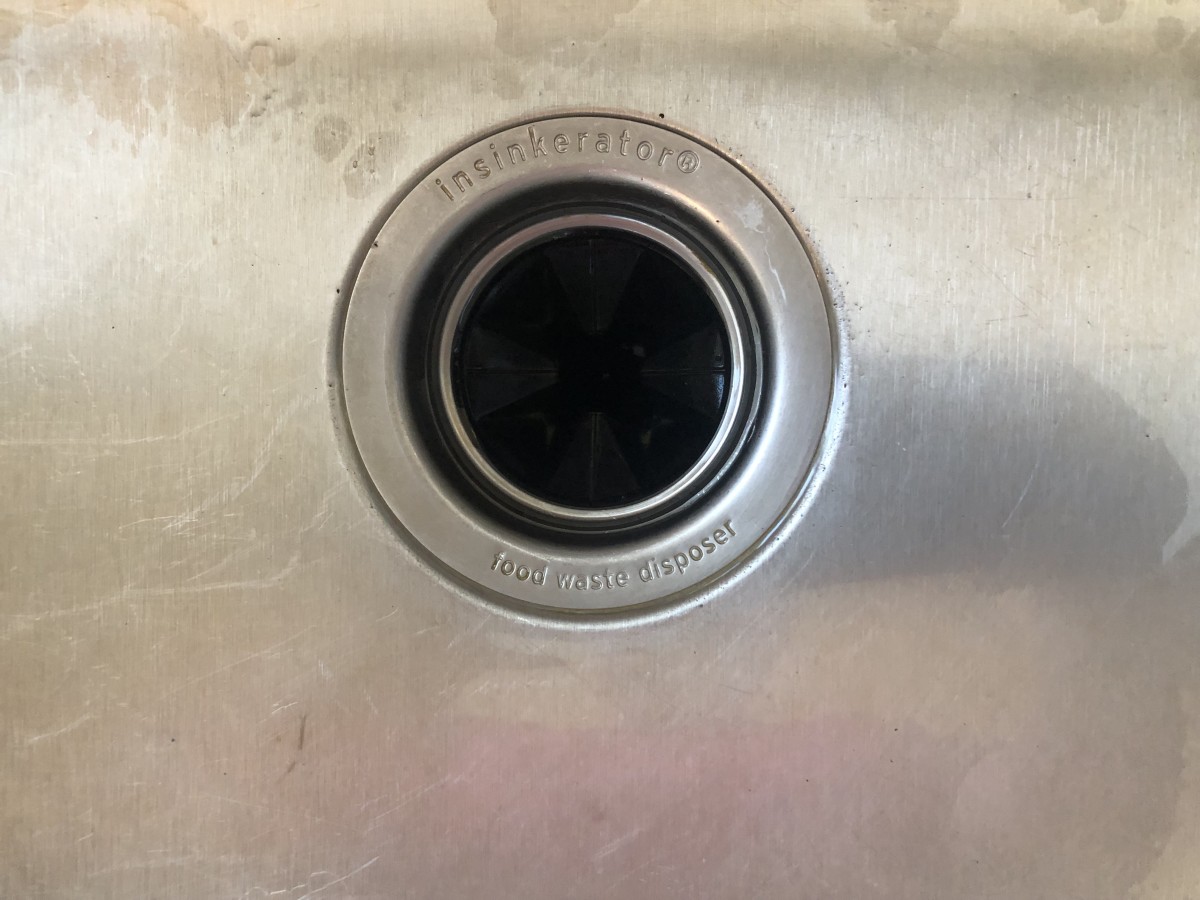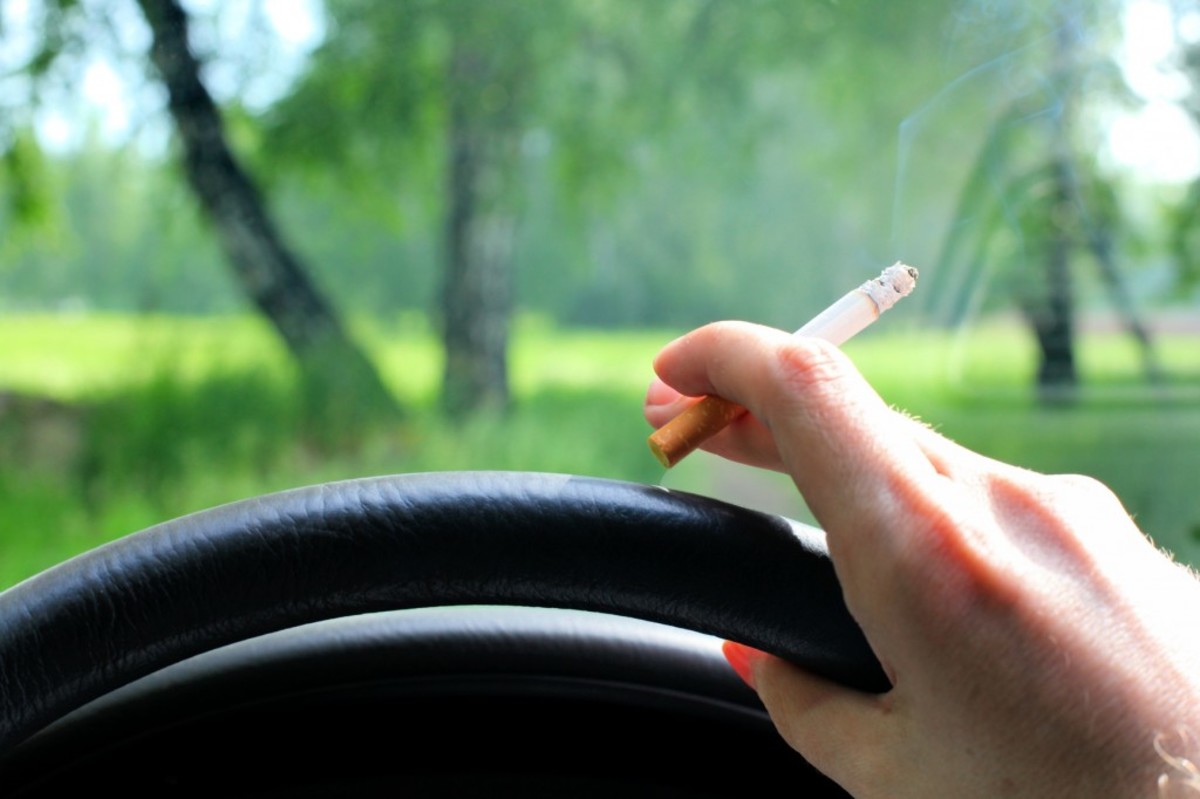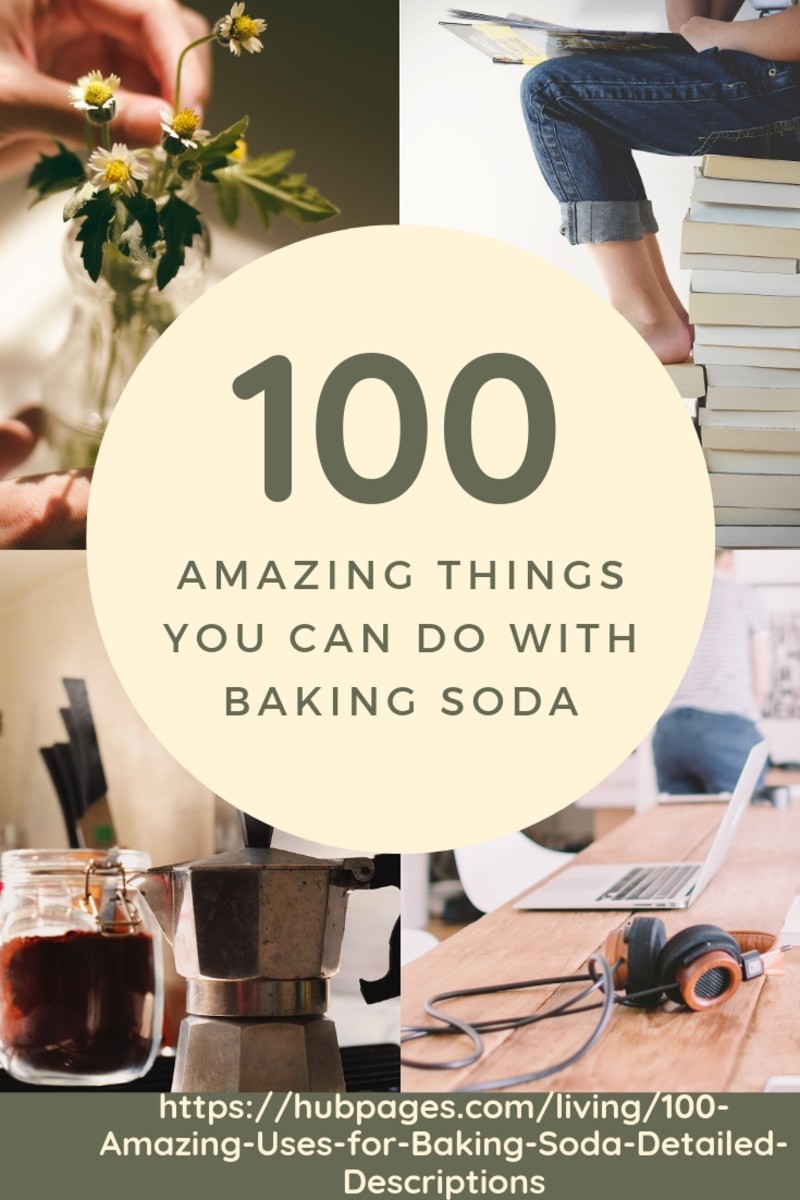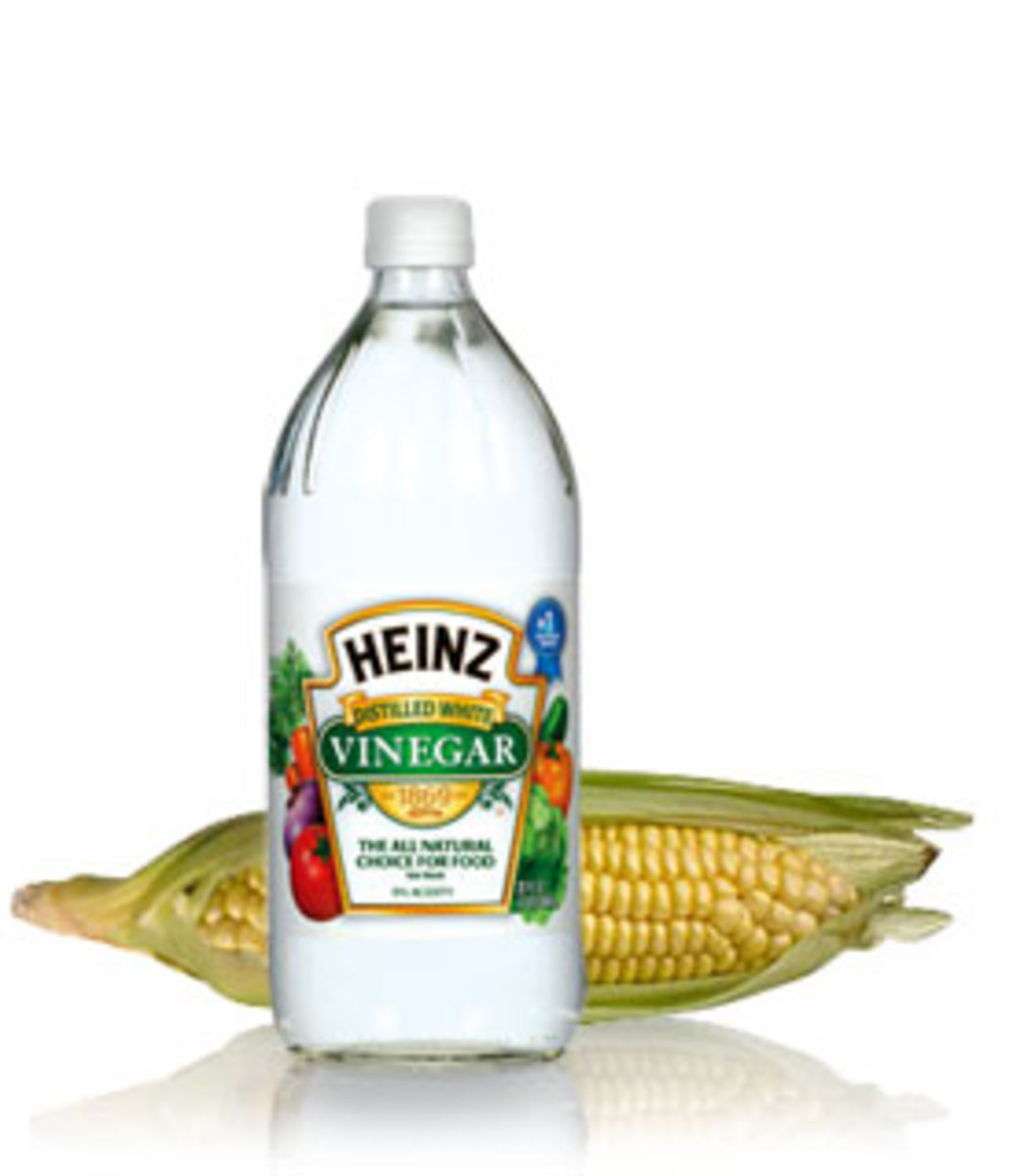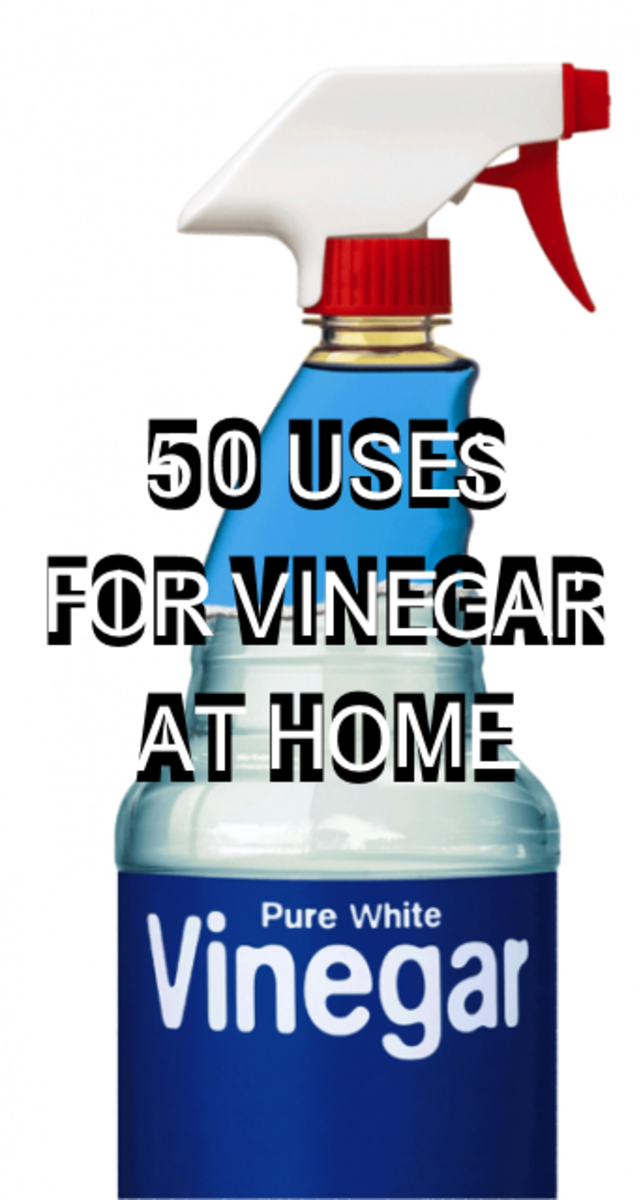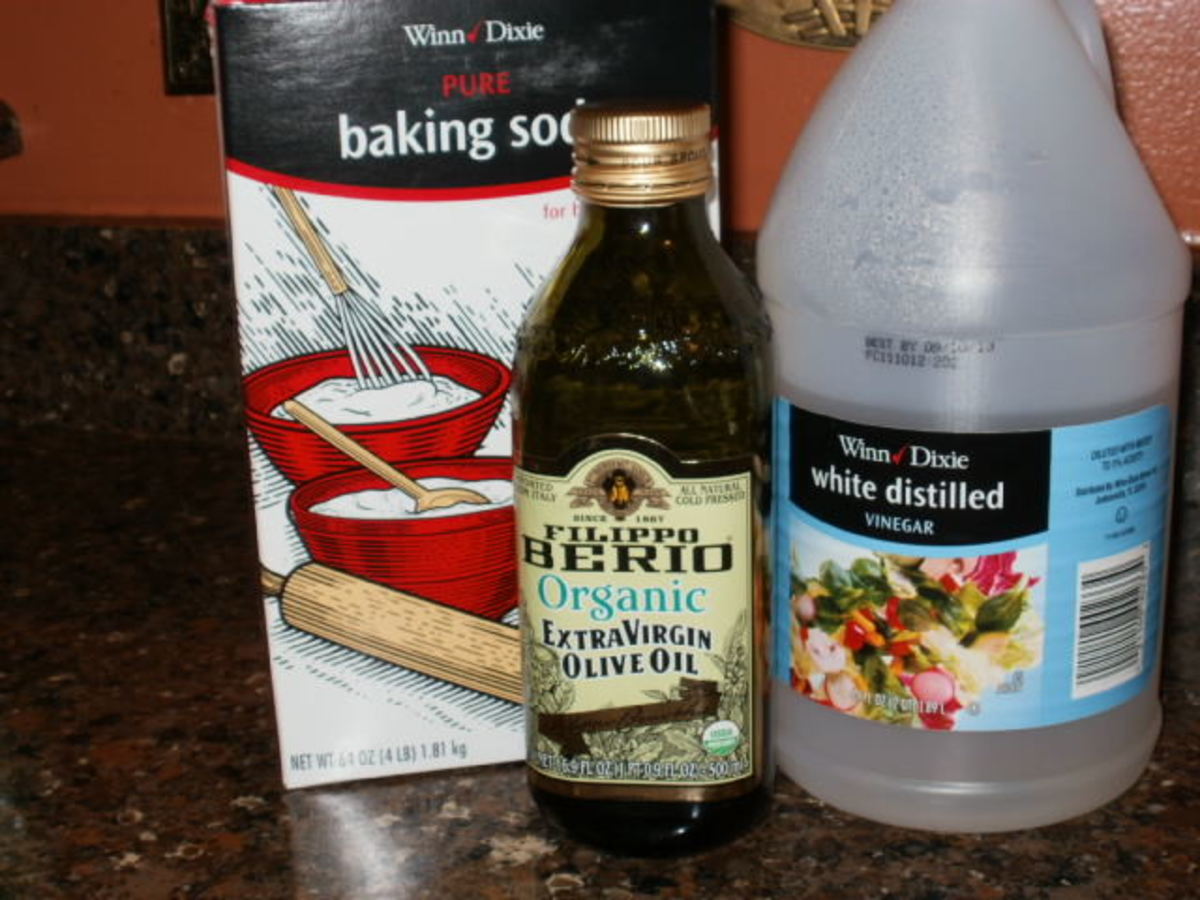My Journey to Go Green and Create a Safe, Non-Toxic Home Environment
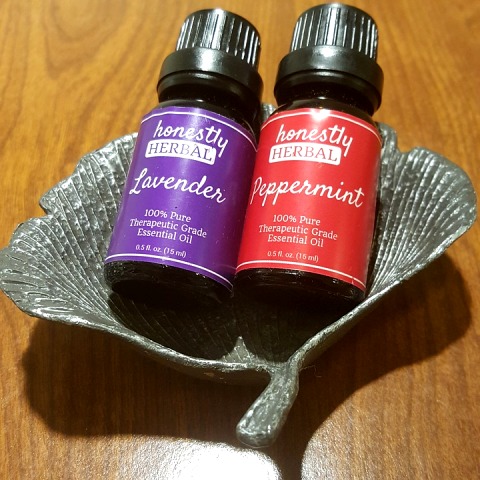
A Home Free of Potentially Harmful Chemical Residues
We all know we should make the switch to green cleaning but where the heck do you start? In financially challenging times, some of the green cleaning products can be very pricey or if you live in a rural area, they may not be readily available or the selection limited.
When I wanted to switch to green cleaning, the main cause of my delay in getting started was the cost of environmentally-friendly products. While I wanted a safe home environment, being budget-conscious played a big role. I wanted to decrease the amount I spent on cleaners, not increase it.
I'll admit, I never did take the plunge and purchase green cleaning products. Instead, I did some reading & looked around my home for products I had on hand, to replace all those chemical-laden household cleaners.
The Turning Point
I was over visiting a male friend and decided to do him a favor by cleaning his bathroom enamel. I asked if he had a cleaner on hand. He brought out a spray bottle with a dark blue liquid in it. I started to spray it in his closed-up bathroom (it was winter) and found myself choking on the fumes. They hit me at the back of the throat and my nasal passages burned. Then my eyes started watering and I felt as if I couldn't breathe. I wondered about the chemicals I was inhaling. In that moment, my desire to find safe, non-chemical-based cleaners intensified.
A second incident also increased my resolve to find safer alternatives. My scalp kept itching and burning. This would come on, seemingly out of the blue and I was stumped as to what was causing it. It got so bad one night and lasted for so long, that in desperation, I submerged my head in water. And the itching stopped. At that point, I figured out the culprit was the store-bought shampoo I was using to wash my hair. I had to find something that was less harmful and fast. Learn more about how I found wonderful affordable alternative that I had readily available: Using Baking Soda For Hair Washing.
As touched on, I had already been thinking about trying to "green" my home but wasn't sure how to really go about it. It's easy to form a resolution but a little harder to actually put it into practice. Eco-cleaners were not readily available--at least in my area (I live out in the country)--and the environmentally-friendly cleaning products that could be ordered seemed very expensive.
Since cleaners are something that we all use and will continue to use over the long-term, realistically speaking, anyone who desires to switch to green cleaners has to have ready access to them and has to find a way to incorporate them into their budget.
Along the same lines, I was talking to a mother of three children and she said that she wished she could buy organic food but could not afford to do so. Whether it's green cleaners or organic food, many of us are in the same boat. We know we should take these steps to protect our health but financial pressure comes into play.
Greening My Home and Eliminating Harmful Chemicals
When I returned home, I went through my cleaners and got rid of most of them. It turned out I didn't have that many. A couple of years previously, I had decided I would no longer use oven cleaner and I had switched to lining my oven with foil to catch most of the drips and mess. What I had on hand was a commercial scrubbing agent, a window cleaner, laundry detergent, dish soap and bleach. Not a lot of cleaners but what chemicals did they harbor?
I decided to start with the first three products and see if I could replace them with something else. While the task of totally switching over to green cleaning seemed daunting, I could take baby steps.
After doing some of my own checking, I decided that I would try using baking soda to replace the scrubbing powder, I would use vinegar to replace the window/surface cleaner, and I would grate a bar of Ivory soap and combine it with baking soda to replace my laundry detergent. I had these items on hand and they were and are inexpensive.
Using Baking Soda as a Scrubbing Agent
Baking soda makes a great scrubbing agent. If you've ever cleaned your stove rings with it, you know how it cuts through tough grime.
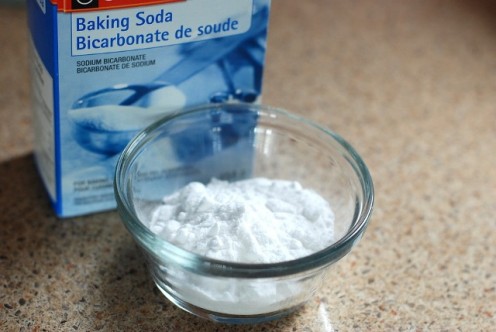
In the Bathroom
How I Clean the Claw Foot
Since the bathroom is one of the rooms that requires frequent cleaning, a room that usually requires a bit of scrubbing, and a room where we expose our skin to cleaning agents, I decided it would be the first room to become chemical free.
I Since the bathroom is one of the rooms that requires frequent cleaning, and a room that frequently requires scrubbing, and where we expose our skin to cleaning agents, I decided it would be the first room to become chemical free. I filled a plastic container with baking soda and a spray bottle with vinegar. These would become my new bathroom cleaners.
I started with my claw foot tub. It's a big old dinosaur with rough enamel that has worn and become porous over the years. I sprayed a cloth with the vinegar and then shook on baking soda so that I had a scrubbing paste. When I removed the soap scrum and grime, I finished by simply spraying the tub with vinegar and leaving it to dry. I find that doing this actually whitens the enamel. (In recent months, I've made a scrubber out of Red Heart Scrubby yarn and this goes a good job). I've also found that vinegar does a great job for cleaning taps and I end up with a fabulous shine.
Now, while this homemade preparation doesn't "eat into" the grime like a corrosive cleaner might, it still does the trick. I'm willing to invest a bit more "elbow-grease" if it means my tub is a chemical-free zone and the peace of mind is invaluable, knowing that one isn't bathing in chemical residues.
I discuss this in my article: How to Make Your Own Environmentally-Friendly Tub Cleaner, so if you have decided to go this route, you may find the information helpful.
How I Clean the Sink
From there, I used the same scrubbing paste on my bathroom sink and found that it did the job nicely. Another benefit is that this preparation acts as a gentle drain cleaner. Even better, I tried spraying the outside enamel, remembering how shiny my taps had been after using the vinegar and found it did wonderful job.
How I Clean the Toilet
It was so easy to tackle this task. I simply sprinkled in baking soda, then used my scrubbing brush to clean the bowl. Spraying the seat, lid and enamel with vinegar left them gleaming. And all was deodorized and smelled clean.
Once I'd cleaned my bathroom this way, I wondered why on earth it had taken me so long to get started. So, simple, so effective, so safe.
Baking Soda Makes a Great Scubbing Powder
I researched baking soda & learned so much about this wonderful substance & why it makes such a good cleanser around the home. If you switch to using baking soda, you can eliminate all those scourers, scrubbing pastes & cleansers that leave behind fumes and chemical residues, plus you can save a lot of money into the bargain.
Baking soda neutralizes acids and breaks down proteins. It is especially effective for cutting through dried-on grease and for combating stains. It neutralizes acidic scent molecules, which also makes it an effective deodorizer.
Do You Use Baking Soda for Cleaning?
Using Vinegar as a Surface Cleaner
If you want clean and shiny for your glass, enamel, or even plastic surfaces, vinegar is hard to beat. It's not just good for windows. Try cleaning your small appliances, your stove glass, your coffee maker and more.
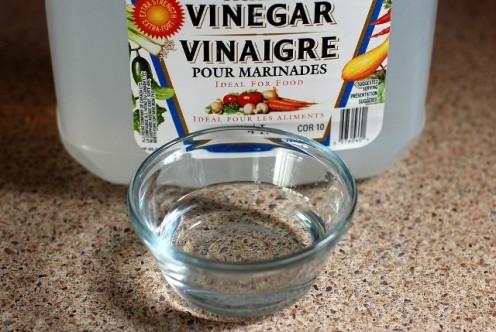
Vinegar Around the Home
When I saw what a good job vinegar did for my bathroom enamel and my taps, I started using it around my kitchen. What a difference! Have you ever struggled to get that glass panel on your stove back clean without streaks? Want your coffee maker to shine? How about the outside of your fridge? If you have a microwave that sits above your stove, you know how the front panel can become a magnet for grease. Use vinegar to cut through it and get back the shine.
You may wonder about the smell. Whether you use it full strength or dilute it with water, there will be a bit of an odor but you will find that after awhile you really don't notice it. The smell dissipates readily enough. When you think about it, people used to clean their windows with vinegar for many years. You can breath in vinegar fumes and you never have to worry about exposure to chemicals.
I now use vinegar with hot water to mop over my floors and thus have eliminated another cleaner.
Do You Use Vingar for Cleaning?
Using Grated Ivory or Lavender Bar Soap and Baking Soda to Replace Laundry Detergent
A simple laundry soap can be made from these two ingredients.
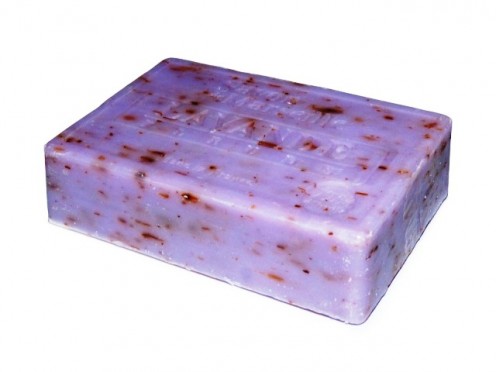
DIY Laundry Soap
I was stumped for awhile as to what I could use for cleaning my clothing. Every homemade preparation I came across included products I didn't have on hand. In the end, I thought I would try grated Ivory soap or grated lavender soap (when I had it) and baking soda, and later, if I could find it in my area, washing soda.
I have been using this preparation for a couple of years now and find it does a good job of cleaning my laundry. I use a tablespoon-sized scoop and don't go through it all that quickly.
I've noticed the inside of my washing machine looks whiter, my clothes no longer reek with fumes, smaller allergies have cleared up, and I seem to breath easier.
If you decide to use this preparation, you may choose to add other environmentally-friendly cleaning agents.
Tip for Heavenly Smelling Clothes
Add a couple of drops of lavender essential oil to your laundry soap or grate a bar of lavender soap when you are making your mixture.
How to Save Money by Making Your Own Cleaning Supplies
Progress Report for Making My Home Green with Natural Cleaners
Bathroom
| Kitchen
|
|---|---|
bathroom cleaners
| appliance cleaner
|
hair conditioner
| glass polisher
|
shampoo
| oven cleaner
|
toothpaste
| sink cleaner
|
I have replaced all of these cleaners, using baking soda + vinegar or using them separately depending on what they are needed for.
Laundry
| Around the Home
|
|---|---|
dryer sheets
| furniture polish
|
laundry detergent
| floor cleaner
|
I have replaced these by using wool dryer balls, grated Ivory + baking soda, olive oil and vinegar.
Looking for More Ideas for Making Your Own Cleaning Solutions?
There's a lot of information available online on how to replace most household cleaners. Some formulas are fairly simple, others are a bit more convoluted.
If you are looking for additional ideas for easier preparations, The Naturally Clean Home: 150 Super-Easy Herbal Formulas for Green Cleaning offers great ideas coupled with the use of essential oils, so that your home smells as fresh and clean as it looks.
This book covers a wide range of cleaning tasks, such as tackling the BBQ grill or cleaning your house siding. It discusses making carpet shampoo,and even offers tips for cleaning vehicles, plus a whole lot more.
You'll not only learn how to make your own cleaners but why these natural preparations are beneficial and how they work to combat germs, sanitize and deodorize and clean grime.
Essential Oils Can Enhance Your Green Cleaning
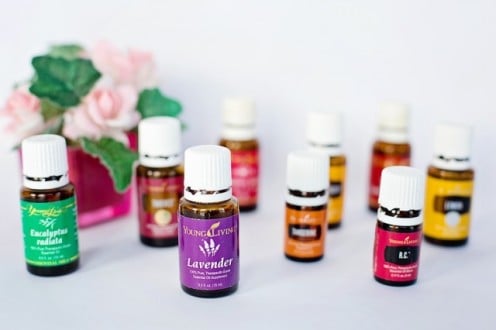
What Are Your Favorite Environmentally-Friendly Cleaners?
Make the Start to Go Green
If you are looking to go green and create a safe, non-toxic home environment, I hope this article has helped to give you ideas about how to get started on the path to going green. While we can't control toxins in our environment, we can tackle the home-front to protect our bodies from needless exposure to chemicals and known carcinogens. Each room and surface we come into contact with has the potential to impact our health, our kids' health, and our visitors' health, whether through inhalation or through absorption.

